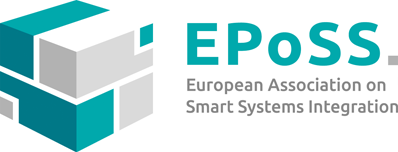In addition to contributions that the three industry associations AENEAS, EPoSS and Inside made in June 2024 to the initial debate on the 10th EU Framework Programme (FP10) for Research and Innovation (R&I), they now comment on the Draghi and Heitor Reports and update their recommendations for FP10.
Main recommendations:
From an industrial perspective, the main recommendations can be summarised as follows:
I. Strengthen industry involvement
The innovation gap between the EU and global leaders appears to be mainly due to lagging R&D investments by the largely mid-tech EU business sector. Therefore, high-tech R&D-intensive industries such as Electronic Components and Systems (ECS) should be supported to grow. General framework conditions should be enhanced to encourage higher private R&D investments and attract more high-tech industry. FP10 and the Union’s industrial policy must be mutually reinforcing, both contributing to the new European Competitiveness Deal. Therefore, FP10 should be well aligned with investment initiatives pertaining to industrial competitiveness such as the Chips Act and Important Projects of Common European Interest (IPCEIs) to ensure seamless coverage of all TRL levels up to production readiness, covering the entire value chain, from semiconductor chips to embedded software to full system integration at application level. According to our analysis, large enterprises performed half of all R&D in the EU but received only 7.5% of all Horizon Europe funding in 2021-2023; this discrepancy should be addressed in FP10. More generally, FP10 should better reflect the important role of industry in transforming science into innovations with impact on economy and society.
II. Join forces
For our fragmented continent, joining forces is the only viable approach. Within FP10, collaborative R&I projects should remain the main modality. Researcher exchanges between science and industry should enhance and accelerate knowledge transfer and address skill shortages. Within the Union, national and regional R&I efforts should be aligned better with the common European interests pursued by FP10. International cooperation with like-minded countries outside the Union on topics of mutual interest should be intensified to ensure economic security. Public-private partnerships should be continued with increased investments and with industry continuing to contribute mainly in-kind rather than cash, to safeguard effective collaboration. In view of its strategic importance for European competitiveness and economic security, the Chips Joint Undertaking should be prolonged, enlarged and improved, with a genuine tri-partite approach and with industry continuing to set the Strategic Research and Innovation Agenda (SRIA).
III. Make FP10 ambitious, attractive, balanced, effective, efficient and strategic
Increasing the budget for FP10 to €200 billion is necessary to fund high-quality proposals and bridge the R&D gap with Europe’s international partners and main competitors. FP10 should maintain its current three-pillar structure, balancing fundamental research, applied research and innovation, while reducing red tape to attract more industry participation. As Widening Member States relatively receive almost twice as much funding from Horizon Europe as the other Member States, FP10 should primarily promote quality, impact and European industrial competitiveness at the worldwide level, not cohesion within the Union. Furthermore, it should continue addressing societal challenges, including the green and digital transitions of energy, mobility, health and sustainability. In the end, it should lead to shared prosperity and serve the future needs of Europe’s citizens.
The paper is available for download below.
Share on
